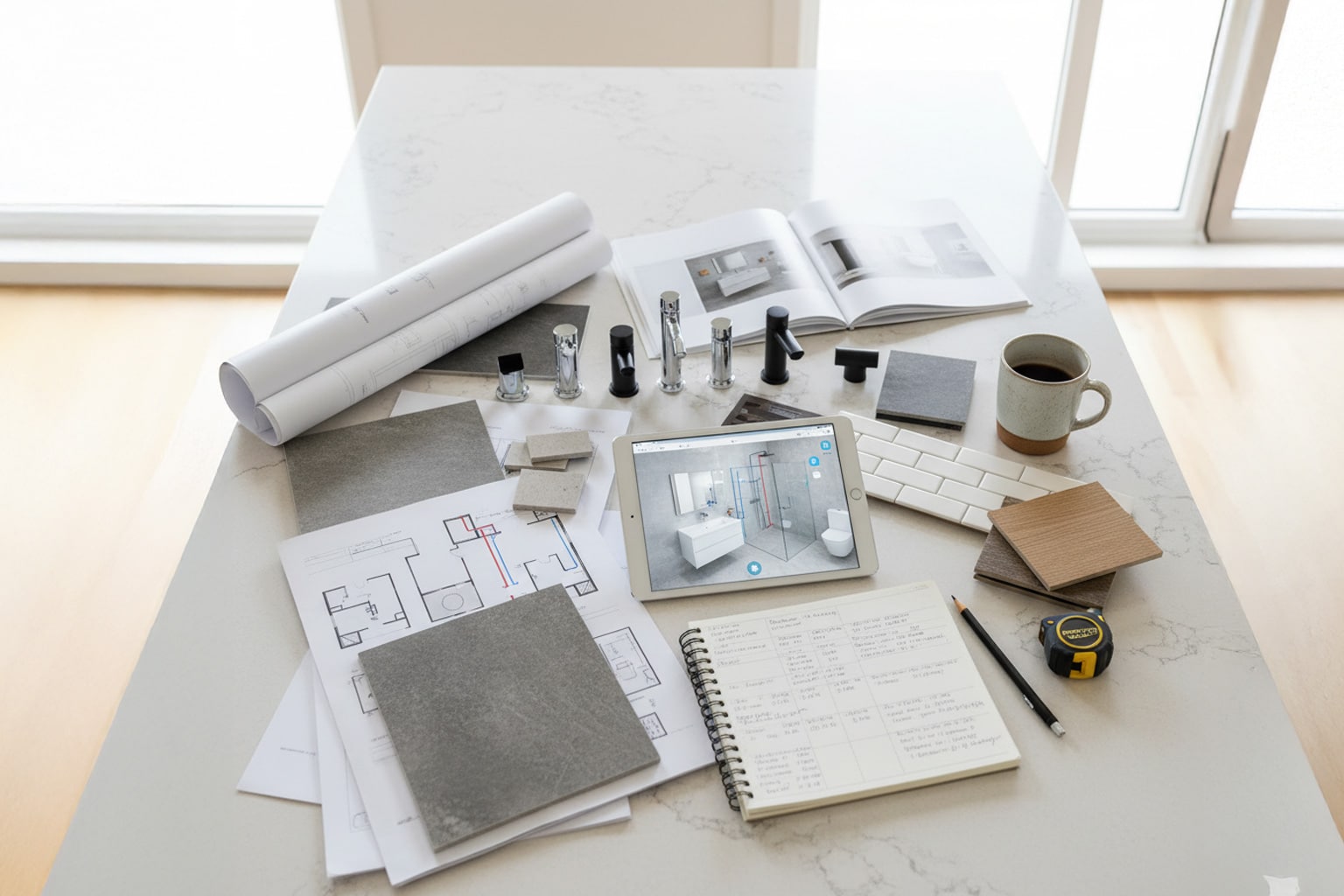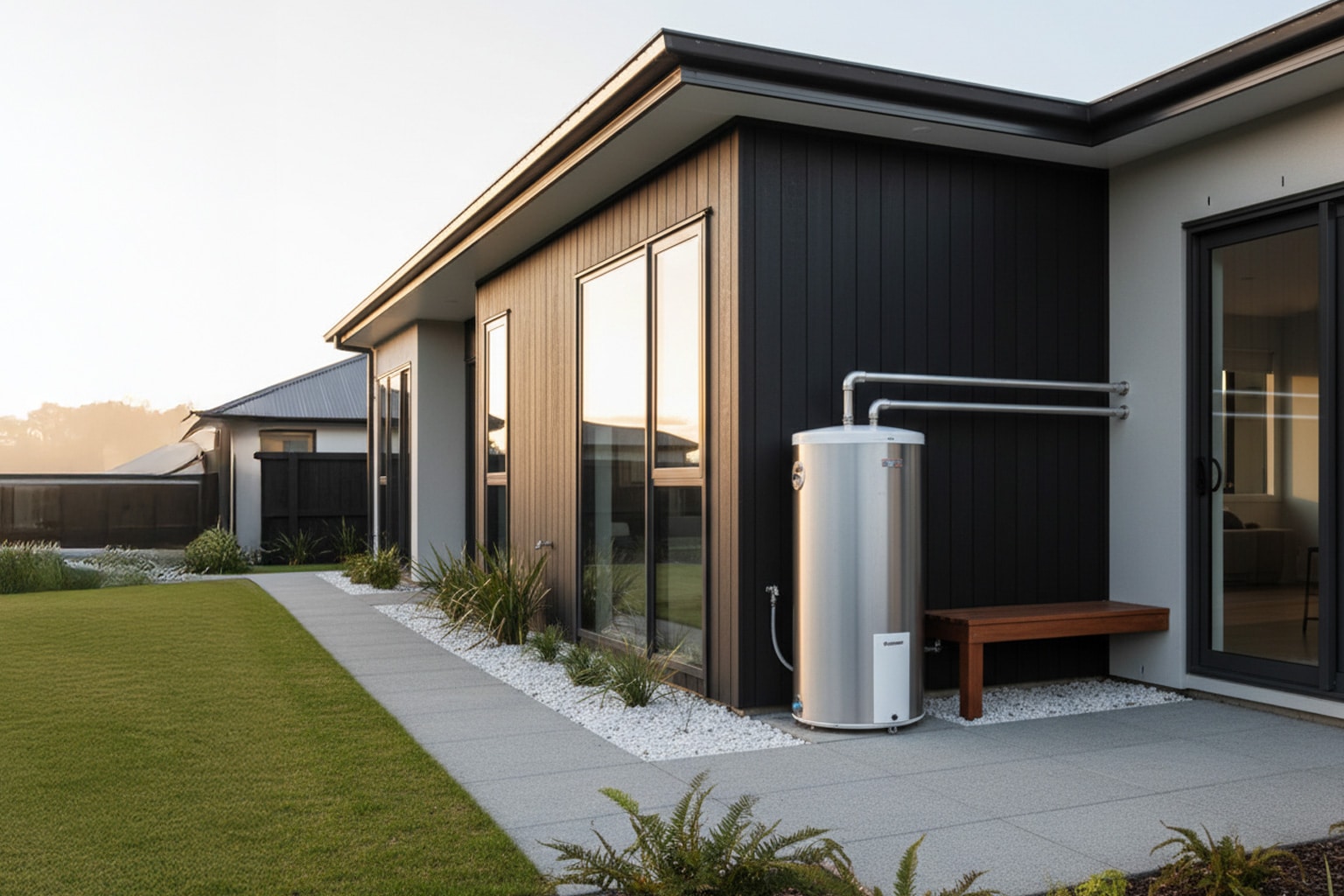A small, tired bathroom can wear you down. You weave around a tight vanity, juggle towels, and store toiletries wherever there is a gap. Mornings feel rushed. Evenings feel cramped. It does not have to stay that way. With the right plan, bathroom renovations can turn a small room into a practical, calm, and good-looking space that lifts daily life.
This guide is for owners who want results that last, like seeing how smart layouts, efficient fixtures, and the right hot water choices work together. We also show how planning, budgeting, and coordination keep stress low. By the end, you will know the steps that make bathroom renovations in Auckland a clear upgrade rather than a headache.
Many older Auckland homes have bathrooms that no longer fit family life. Narrow rooms, high baths, and dated fittings slow the morning routine. Storage is poor, so bottles live on the floor or on the windowsill. The door swings into the room and blocks the path. Heat and ventilation may be weak, which leaves steam and damp corners. You end up doing small workarounds every day just to get through the basics, clear signs that the space is ready for thoughtful bathroom renovations.
These issues also affect safety and comfort. Small children struggle with high sides on a bath. Older family members find it hard to move around in tight corners. Poor drainage can leave water pooling near the entry. With limited power points and poor light, tasks take longer and feel harder than they should. Naming these pain points is the first step to solving them and having reliable bathroom renovations.
Good design makes each square metre work. Small changes in position can create clear paths and better storage. Wall space becomes useful when you select the right fixtures and plan the plumbing routes with care.
Here are practical moves that deliver quick wins:
A licensed plumber helps you group services to shorten pipe runs and improve pressure balance. That support matters in tight rooms where every millimetre counts. It also sets the base for tidy finishes, since straight lines and level falls need a solid plan behind the walls.

A renovation is the best time to improve efficiency. New fixtures can reduce water use without hurting comfort. Look for dual-flush toilets with proven performance, basin mixers with flow control, and shower systems that deliver a steady spray at lower flow rates. This keeps bills down and supports responsible use across the city, an easy win during bathroom renovations.
When you select products, match them to your home’s water pressure and available space. Low-flow fittings achieve little if the pressure setup is wrong. A plumber will check mains pressure, cylinder type, and pipe sizes, then recommend options that feel good in daily use. This is where water-efficient bathroom fixtures in NZ turn into real savings over many years.
Hot water drives comfort and cost in a bathroom. An older cylinder or an undersized unit often wastes energy and can struggle at peak times. During a renovation, a review of your water heater setup can lift performance and cut running costs. The right size and efficiency level reduce reheating cycles and help the system keep up without strain.
For many homes, upgrading the water heater during a bathroom project is the easiest way to protect future bills. You gain reliable showers, faster recovery after evening use, and better temperature control for children. Your plumber can test the current draw and confirm tempering valve settings, then propose a replacement that is fit-for-purpose, aligning with your layout and budget as part of well-planned bathroom renovations.

Space inside a small bathroom is precious. Moving the cylinder outside can free an entire cupboard or unblock a layout that never quite worked. This creates room for a larger shower, a laundry combo, or extra storage within the old cylinder space.
An outdoor setup can also reduce noise and heat in the bathroom area. Thus, this builds the idea to plan proper bathroom renovations. With correct siting, pipe insulation, and safe routing, heat loss remains low and service access becomes easier.
You want a room that feels good every day, and you also want smart use of money. A well-planned bathroom renovation adds comfort and appeal to buyers. New waterproofing, straight walls, and reliable services reduce the chance of damage in the years ahead. Clean lines, light colours, and a strong layout help the room look larger than it is, which supports value if you sell later.
When you estimate return, weigh both daily savings and future interest from buyers. Lower water and power use add up across the year. Better storage and safer access increase ease for all ages. Small choices like a cavity slider or a larger shower space can change how the room feels. These elements form a clear case for the return on investment that bathroom renovations can achieve for NZ homeowners.
Behind the tiles sits the work that protects your home. Poor fall to the waste, rushed waterproofing, or incorrect pipe sizing can lead to leaks, smells, or pressure issues. Fixing these after the room is finished is expensive and disruptive. This is why you should engage plumbers for bathroom renovations, Auckland homeowners already trust with full wet-area builds.
An experienced team checks the structure, pressure, drainage, and vents before you close the walls. They ensure the shower base and wastes meet code and that waterproofing ties into the right edges. They set the correct isolating valves and test for leaks before tiling. This calm, methodical approach keeps surprises out of the final weeks and protects the finish you have paid for.
Clear steps keep a small renovation on track. When everyone knows the order of work, delays and rework fall away. Your plumber can coordinate trades, confirm deliveries, and keep you informed.
A typical small bathroom timeline looks like this:
Complex sites vary, yet the principle holds. Lock decisions early, book trades in order, and keep communication open. This reduces disruption and gives you a finish date you can plan around.
The outcome should feel simple and calm. You open the door and move without sidestepping. Towels have a place. Bottles live inside a tidy mirrored cabinet. The shower space feels generous due to clear glass and correct lighting. The room dries quickly after use, which keeps it fresh. Maintenance is easier because surfaces and joints were planned, similar to how we approach bathroom renovations.
This is the difference between a quick cosmetic change and a thoughtful upgrade. Good bones behind the tiles allow easy living in front of them.
Owners often ask for space-saving ideas for small bathrooms in NZ households that can apply to their place. Start by mapping must-have items, then test a few layouts on paper. Keep swing paths clear and avoid narrow pinch points. Choose light colours and continuous floor lines to increase the sense of space. Add task lighting near mirrors and warm light for general use. Even small tweaks, like a recessed niche instead of a shelf, reduce visual clutter.
Older homes bring unique questions. Walls may not be straight. Venting could be limited. Subfloors can need strengthening before a tiled shower. If you are renovating a bathroom in an old Auckland house, a site check will reveal what sits behind the linings, so your bathroom renovations stay on track.
Costs vary with scope, finishes, and the state of the existing services in bathroom renovations. Keep a small contingency for hidden work behind walls or under floors. Ask for a clear, itemised quote that shows labour, fixtures, waterproofing, and hot water changes. If the budget is tight, stage the work. Start with the layout, waterproofing, and fixtures, then add extras like heated towel rails or mirror cabinets later.
A careful approach protects value. Solid waterproofing, correct falls, reliable pressure, and well-sized hot water work quietly in the background.
Cylinder size and placement affect both comfort and space. In small houses and units, a modern, well-insulated cylinder or a correctly specified alternative will keep showers consistent. Your plumber can explain options and advise on the best hot water cylinder for small houses. NZ buyers often compare. They will also confirm tempering for safe outlet temperatures and advise on pressure settings that suit your fixtures.
If you choose to move the cylinder outside, check access, anchoring, and local rules. Outdoor placement can work well with a small bathroom upgrade because it frees up indoor space at once.
A well-designed layout is the most critical element of successful bathroom renovations, as it directly impacts function and comfort more than any specific product. The optimal design prioritises an unobstructed walkway in high-traffic zones, aligns the basin and mirror to maximise natural light, and strategically places the shower to accommodate a frameless screen, which enhances the perception of space.
For projects that require a bathtub, a compact model with a flat base provides greater accessibility and safety for diverse users. A qualified plumber is a key resource for confirming vent runs and selecting an appropriate, quiet, and effective ventilation system, ensuring all technical aspects of the design are executed properly.
Small rooms demand smart choices. With careful planning, tested products, and skilled installation, bathroom renovations can turn a tight, tired space into a room that works well every day. You gain clearer paths, better storage, reliable hot water, and lower bills. You also gain the comfort and value that come from a tidy, modern finish.
Matthews Plumbing handles planning, coordination, and commissioning across each stage. We help with how to plan a small bathroom layout, fixture selection, hot water decisions, and full compliance. Whether you want a quiet refresh or a complete upgrade, we will guide the work so the result feels easy to live with and easy to maintain. When you are ready, book a consultation and let us show you how a small space can become a smart, valuable part of your home.
